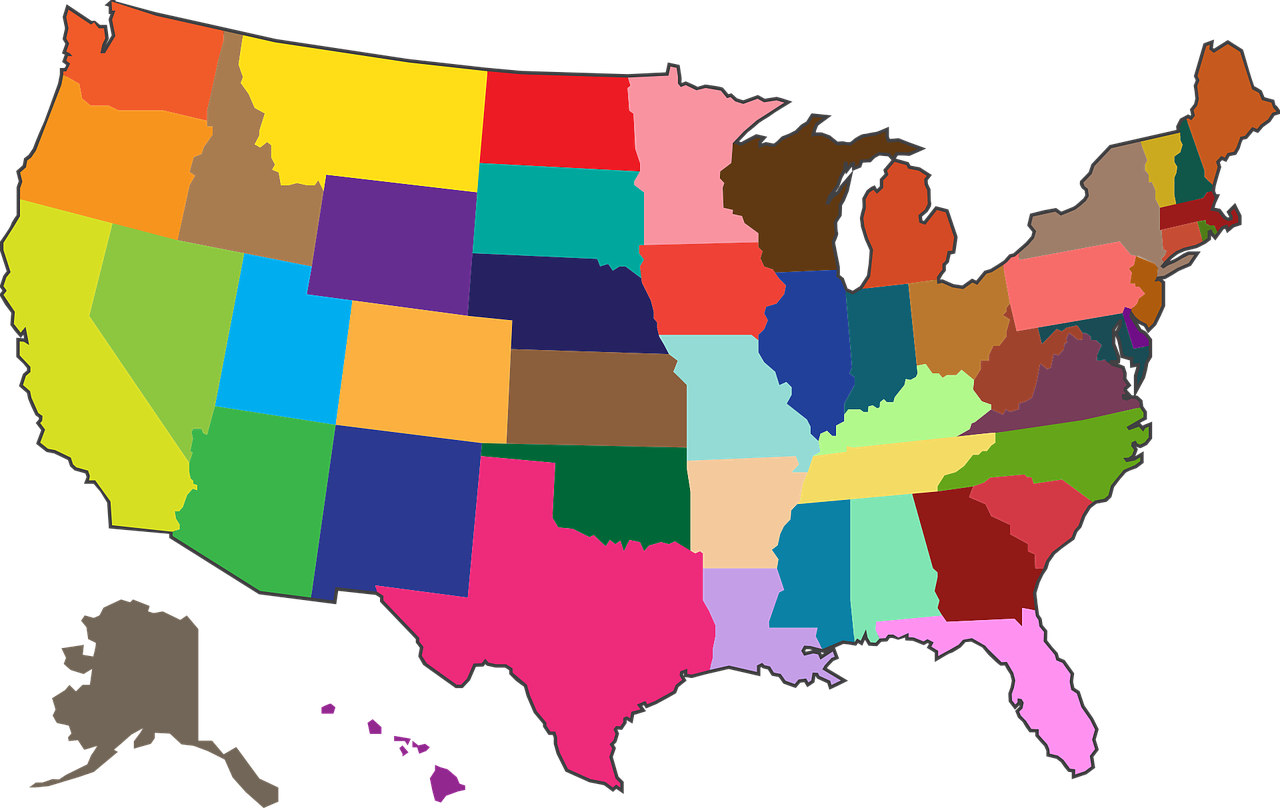How Much is Assisted Living?

Considering Assisted Living Costs
Making the decision to move into assisted living is an important one. It can involve various considerations including lifestyle, independence, and most importantly, the cost. Understanding the costs associated with assisted living can help you make an informed choice that fits your financial situation.
The cost of assisted living will depend on a variety of factors such as the location, services provided, and type of facility. The national average for both private pay and medicaid-assisted living costs can provide a useful baseline. Additionally, the cost of assisted living can vary significantly from state to state. There may also be one-time fees associated with moving in and ongoing expenses that may increase the cost of living.
Fortunately, there are a range of government and charitable programs providing financial assistance to those looking to move into assisted living. In addition, there are numerous resources available to help people learn more about the cost of assisted living.
The following post will explore these issues in greater detail so you can make an informed decision about the costs associated with assisted living.
What is Assisted Living?
Assisted living is a form of senior care that provides assistance with activities of daily living, such as meal preparation and housekeeping. It also provides social and recreational activities, transportation, and personal care services (e.g., helping with getting dressed and taking medications). Assisted living facilities may also offer memory care for those who are living with Alzheimer's or dementia.
Assisted living is great for seniors who want to maintain their independence, but need some help with day-to-day tasks. They can live in an assisted living facility while having access to services that meet their individual needs.
Services Provided at Assisted Living Facilities
Assisted living facilities offer a range of services to meet the needs of residents. Most facilities have staff on-site around the clock for assistance with anything from medication management to personal care. Other services provided by assisted living facilities include:
- Housekeeping and laundry services
- Social and recreational activities
- Transportation and meals
- Memory care for individuals with Alzheimer’s or dementia
- Help with daily tasks such as bathing, eating, dressing, and toileting
Cost Factors of Assisted Living
Assisted living provides an invaluable service for seniors and their families, but cost is often a major factor when it comes to making the decision. There are several factors that affect the cost of assisted living, and understanding them can help you make an informed choice about the right facility for you or your loved one.
Location
The cost of assisted living fluctuates greatly depending on the location in which it is offered. Prices can range from state to state, and even from city to city. Generally, cities with higher costs of living tend to have more expensive assisted living facilities, while rural areas may be cheaper.
Type of Facility
The type of assisted living facility also has a major influence on the cost. Nursing home-style centers typically offer basic medical care and supervision in addition to assistance with daily living activities such as dressing and bathing. Memory care facilities provide more intensive care for those with dementia or memory impairments, and thus may be more expensive. Other types of facilities may also include luxury amenities, such as a pool, fitness center or beauty salon, which can add to the overall cost.
Services Provided
The services provided by each assisted living facility vary greatly, from limited help with basic activities to 24-hour staffing, medical care and specialized therapy. The amount of care a resident needs will have an effect on the cost. For example, a resident needing round-the-clock care and monitoring would likely pay a higher rate than one requiring only minimal assistance.
Ultimately, the cost of assisted living depends on a variety of factors, from the location of the facility to the services it provides and the level of care needed. Choosing an assisted living facility is an important decision, so it is essential to consider all of these factors when researching the cost.
National Average: The Cost of Assisted Living
When planning for long-term care, it is important to understand the average cost of assisted living. Assisted living is a residential care facility for seniors or those with disabilities who need help with daily activities such as meals, bathing, and dressing. Some facilities might also provide medical care or other specialized services.
The national average private pay monthly cost for assisted living is approximately $4,300, according to the 2019 Genworth Cost of Care Survey. This fee is paid directly by residents or their families and is typically not covered by any government programs or insurance plans. The average monthly medicaid-assisted living cost can vary from state to state, but it is generally much lower than the private pay rate.
It is important to remember that this is just an average, and the actual cost could be higher or lower depending on where you live. In addition to the monthly cost, there may be other fees associated with assisted living.
State-by-State Cost of Assisted Living
When considering the cost of assisted living, it’s important to take into account the state in which one plans to reside. Assisted living costs vary widely from state to state, with states like Alaska and Hawaii having the highest average costs and states like Arkansas and Mississippi having the lowest.
Generally, the Northeast and West Coast have higher median prices for assisted living than other parts of the country. For example, Massachusetts has an average monthly cost of $6,500 and California comes in at $5,800. In contrast, Mississippi’s average monthly cost is $2,300, and Arkansas’s average is a slightly higher $2,400.
In addition to location, there are other factors that can influence the cost of assisted living. These include the type of facility, the services offered, and the individual’s needs. Some common services provided at assisted living facilities include meals, activities, housekeeping, and transportation. Facilities may also offer specialized care services such as nursing care, memory care, or rehabilitative therapies.
It’s important to research the cost of assisted living in your area to make sure you’re getting a fair price. You can find this information through online sources or by contacting local facilities directly.
One-Time Fee
When considering the cost of assisted living, one-time fees are something to take into account. These fees are usually charged when you initially move into an assisted living facility and are sometimes referred to as “entry fees.” They are a nonrefundable, upfront fee meant to secure a place in the community for the new resident. The amount of the fee is typically based on the room size, location and amenities of the facility.
The services covered by the one-time fee varies from facility to facility. However, many of these fees help cover the costs of administrative procedures such as move-in paperwork, background checks, and health assessments. It may also cover the cost of setting up individual accounts or services such as recreational activities, beauty salon visits, or educational programs. It is important to confirm with the facility which services and fees are included in the one-time fee.
Additionally, some facilities may also require an additional deposit in order to hold a space for the resident. This deposit, if required, is usually refundable at the end of the resident's stay.
Additional Expenses After Moving into Assisted Living
For many people, moving into an assisted living facility may be the right decision. However, it is important to remember that living in an assisted living facility comes with additional costs that may increase your total cost of living. These additional costs may include meals, health care, and other amenities.
Meals are often included in the cost of living at many assisted living facilities, but the type of meal plan offered will vary depending on the facility and can affect the overall cost. Some facilities may offer a selection of meal plans ranging from basic to more comprehensive and costly options. Meal plans typically include three meals a day, snacks, and beverages.
Health care costs may also vary depending on the specific services you need. Many assisted living facilities provide basic medical care, such as check-ups and the administering of medications. Other services, such as physical therapy or home health care, may cost extra. You should also consider the cost of insurance, which may be required for some services.
Finally, you should consider any extra amenities you would like to have at your new home. These may include items such as cable and internet services, housekeeping services, laundry services, or transportation services. While these amenities are not essential to living comfortably in an assisted living facility, they can add to your overall cost of living.
It is important to understand that in addition to the base cost of living in an assisted living facility, there may be additional expenses that must be taken into consideration. Carefully consider the types of meals, health care, and amenities you need to live comfortably when calculating the cost of assisted living.
Financial Assistance
If you are looking into moving to an assisted living facility, you may be worried about the cost. It is possible to get financial help to pay for assisted living. There are a few different options for you to explore:
- State-funded programs
- Long-term care insurance
- Medicaid
- Veterans benefits
- US Department of Housing and Urban Development (HUD) subsidized housing programs
State-funded programs can provide subsidies for seniors living in assisted living communities. These subsidies are typically means-tested, so you must meet certain income requirements to qualify. You will also need to be a resident of the state in order to be eligible for state-funded programs. Every state will have different criteria for eligibility, so it is important to research specific requirements.
Long-term care insurance is another option for covering the cost of assisted living. This type of insurance is designed to cover long-term health care costs, such as those associated with assisted living. Not everyone has access to long-term care insurance, as it is often too expensive for many households. Those who are able to secure long-term care insurance should consider doing so, as it can be a great way to protect yourself and your family from the costs associated with assisted living.
Medicaid is a federal and state funded health benefit program available to those who meet certain eligibility criteria. It can provide assistance to elderly individuals who wish to move into an assisted living facility. To qualify, individuals must meet certain requirements, which vary by state. It is important to review each state's Medicaid guidelines before applying to determine eligibility.
Veterans may be eligible for benefits that can help pay for assisted living. The VA Aid and Attendance Pension provides a monthly benefit to veterans and surviving spouses who meet certain criteria. It can help cover the cost of assisted living, as well as home health aides or adult daycare services. To apply for the benefit, individuals must complete an application and submit it to the VA.
Finally, the US Department of Housing and Urban Development (HUD) offers subsidized housing programs for people with low incomes. These programs can provide assistance in paying for assisted living. Each program is unique, with its own requirements, so it is important to review the specifics of the program before applying.
Financial assistance is available to help cover the cost of assisted living for those who qualify. Be sure to research the various options available in order to determine the best option for you or your loved one.
Resources
Finding the right resources is key to understanding the cost of assisted living. There are many online sources that can help you learn more about the cost of assisted living in your local area and across the country.
The U.S. Department of Health and Human Services offers a wealth of information about long-term care options and associated costs. The National Institute on Aging's website also provides helpful resources and tips about choosing and paying for long-term care options.
Your local Area Agency on Aging (AAA) may also be able to provide helpful information and services, such as connecting you with local facilities or providing financial assistance. You can find your nearest AAA by visiting the Eldercare Locator website.
Conclusion
It’s important to remember that there is no one-size-fits-all answer when it comes to the cost of assisted living. Every individual’s situation and needs vary, so it’s important to look into the different factors that can influence the cost.
When researching the cost of assisted living, take into account the location, type of facility, services offered, one-time fees, additional costs, and any state or federal funding that may be available. Doing your research ahead of time can help you get a better understanding of what is available and what might be within your budget.
Finally, take advantage of the many resources available that can help you in your search for an assisted living facility. By taking your time and researching your options, you will be able to find the best solution for yourself or your loved one.
Sources
When considering the cost of assisted living, it's important to consult reliable sources of information. The following sources provide accurate information about the cost of assisted living:
- The US Department of Health and Human Services website
- Your state's Medicaid department
- Local senior center, if available
- Assisted living facilities in your area
Additionally, newspapers, television, and other media outlets may feature stories about the cost of assisted living.
Disclaimer
When researching the cost of assisted living, it is important to remember that prices vary between states and even regions. This guide provides information on the current average cost of assisted living on a national and state level. It is important to note, however, that this data may not reflect the cost in any particular area. Additionally, the cost of assisted living may fluctuate due to changes in facilities, services, care levels, and overall market demand.
It is also important to remember that the cost of assisted living does not include all additional expenses such as meals, healthcare, or amenities. Therefore, when considering the cost of assisted living, it is essential to estimate the potential additional expenses that may be incurred after moving in.
This guide is intended as an informational resource. The data provided is not to be considered legal, financial, or other professional advice. A licensed professional should always be consulted before making any decisions about assisted living.
You might also like this article:








